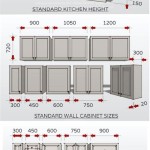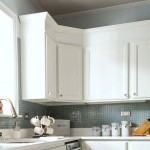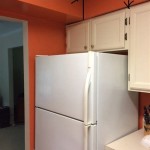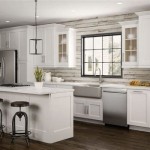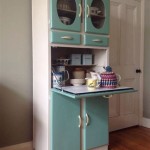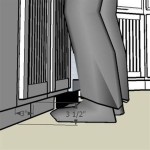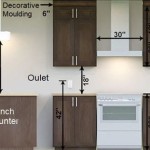Essential Considerations When Adding Legs to Kitchen Cabinets
Adding legs to kitchen cabinets is a crucial decision that can significantly impact the overall aesthetic and functionality of your kitchen. Whether you're remodeling an existing kitchen or building a new one, understanding the essential aspects of this process can help you create a stunning and practical space.
Matching Cabinet Style and Design
The style of legs you choose should complement the existing or desired design of your kitchen cabinets. Consider the finish, color, and shape of the legs to ensure they seamlessly integrate with the overall look of the cabinets. For traditional kitchens, ornate and curved legs may be appropriate, while modern kitchens often opt for sleek and straight legs.
Balancing Weight and Stability
Determine the weight of the cabinets and the load they will bear to select legs that provide adequate support. Cabinets filled with heavy items like pots and pans require sturdy legs with a wide base. Ensure the legs are securely attached to the cabinet frame to prevent any wobbling or instability.
Determining Height
The height of the legs should be carefully considered to achieve the desired look and functionality. Higher legs provide more under-cabinet storage space, while lower legs create a more grounded appearance. Choose the height that suits your personal preferences and the overall design of the kitchen.
Aesthetic Enhancements
Legs can serve as decorative elements that enhance the visual appeal of your kitchen. Choose legs with intricate carvings or unique shapes to add character and personality. Alternatively, sleek and minimalist legs can create a modern and sophisticated look.
Functionality and Accessibility
Consider the functionality and accessibility of the legs. If you frequently access under-cabinet storage, legs with a low profile or a toe-kick space can provide easier access. Additionally, legs with adjustable feet allow for precise leveling and uneven floor surfaces.
Cost and Installation
The cost of cabinet legs can vary depending on the material, style, and size. Determine your budget before making a decision. Installation is generally straightforward, but professional help may be necessary if the cabinets are particularly heavy or require complex assembly.
By considering these essential aspects, you can make informed decisions when adding legs to kitchen cabinets, ensuring both functionality and aesthetic appeal for your kitchen space.

Make Your Own Frugal Kitchen Cabinet Feet

How To Add Decorative Toe Kicks Your Kitchen Cabinets Jenna Sue Design

Adding Decorative Legs To Cooktop Cabinet Sawdust Girl


How To Update Basic Cabinets With Diy Furniture Feet Thrifty Decor And Organizing
504 Main By Holly Lefevre Diy Customizing My Kitchen

Customizing Builder Basic Cabinets The Lilypad Cottage

How To Update A Kitchen Island With Trim And Legs Simply2moms

How To Add Decorative Toe Kicks Your Kitchen Cabinets Jenna Sue Design

Decorative Accents Kitchen Base Cabinets With Feet In My Own Style
Related Posts

